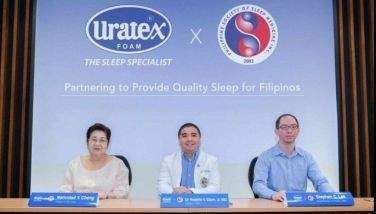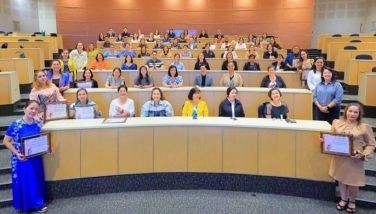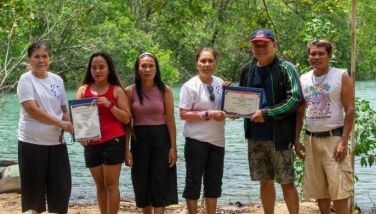US professor sequences own genome in week
SAN FRANCISCO (AP) — It might not be long until there is a gene scanner in every doctor’s office, as DNA sequencing becomes faster and cheaper.
A Stanford University professor reported that he has sequenced his entire genome in a few weeks for under $50,000 using a single machine.
Six years ago, hundreds of researchers at the Human Genome Project completed the same task for $300 million. It took 13 years.
“It’s continuing down the path to making it so every Tom, Dick and Harry are going to have their genomes sequenced,” said Eddy Rubin, director of the US Department of Energy Joint Genome Institute, who was not involved in the study.
The breakneck pace of technological progress in the field of DNA sequencing has raised hopes that affordable gene scans will be available to all patients soon.
Researchers hope cheap gene sequencing will lead to highly customized disease prevention, diagnosis and treatment tailored to an individual’s genetic code.
Only a handful of human genomes have been sequenced so far. Typically those scans have used several machines working side-by-side to read the four chemicals that make up a “letter” in the DNA sequence.
“We’ve shown it can be done with one machine and just three people, with just one operating the machine,” said Stanford bioengineering professor Stephen Quake, whose results were published in the journal Nature Biotechnology.
“It makes genome science accessible to a much broader segment of the scientific community,” he said. “It’s really democratizing the fruits of the genome revolution.”
Still, the cost of entry remains high. The machine Quake used to read his DNA retails for $1 million. The $48,000 cost of his scan was determined as an average based on the total number of scans the machine is expected to be able to perform, he said.
Quake’s machine is sold by Helicos Biosciences Corp., a company he co-founded. Competitors say their machines can sequence human genomes for the same or lower costs at a similar speed.
Richard Gibbs, director of the Human Genome Sequencing Center at the Baylor College of Medicine in Houston, called Quake’s results impressive.
But he also said that as improvements in speed and cost become more common, the real test of a gene scan’s quality is its accuracy. Quake estimates his scan captures about 95 percent of his DNA.
Missing just a few of the three billion letters that make up the human genome could mean not finding clues to a serious disease hidden in a patient’s genes, said Gibbs, who was not involved in the study.
“The genome is enormous,” he said. “What can be a small percentage of difference can add up to a large number of events that you can get or might miss.”
The success of so-called personalized medicine depends not on just reading the letters that make up human genes but in understanding what they mean.
In recent years, an avalanche of research has delved into how variations in just a few letters between individuals can mean a greater risk of developing a disease.
Scientists have also used genetic differences to predict how individuals will respond differently to the same drug.
The promise of making genes a part of everyday medicine has led to intense competition among companies striving to build the fastest, cheapest, most accurate DNA sequencer.
Most current scanners use fluorescent chemical tags that attach to each of the four chemicals that make up a “letter” in the DNA sequence. Sophisticated cameras and software read the tags to identify the genes.
Quake’s scanner is different because it reads just a single strand of DNA at a time. Competing techniques require creating thousands of copies of the same DNA before the genes are scanned.
Quake argues his approach takes less time and fewer people because no one has to prepare the replicas before the scanning starts.
His competitors counter that fewer copies of DNA to read means a greater likelihood of making mistakes.
Cliff Reid, chief executive of Mountain View-based Complete Genomics Inc., said using just a single copy of DNA is like peering through a microscope using a dim light, which can lead to errors.
- Latest



























